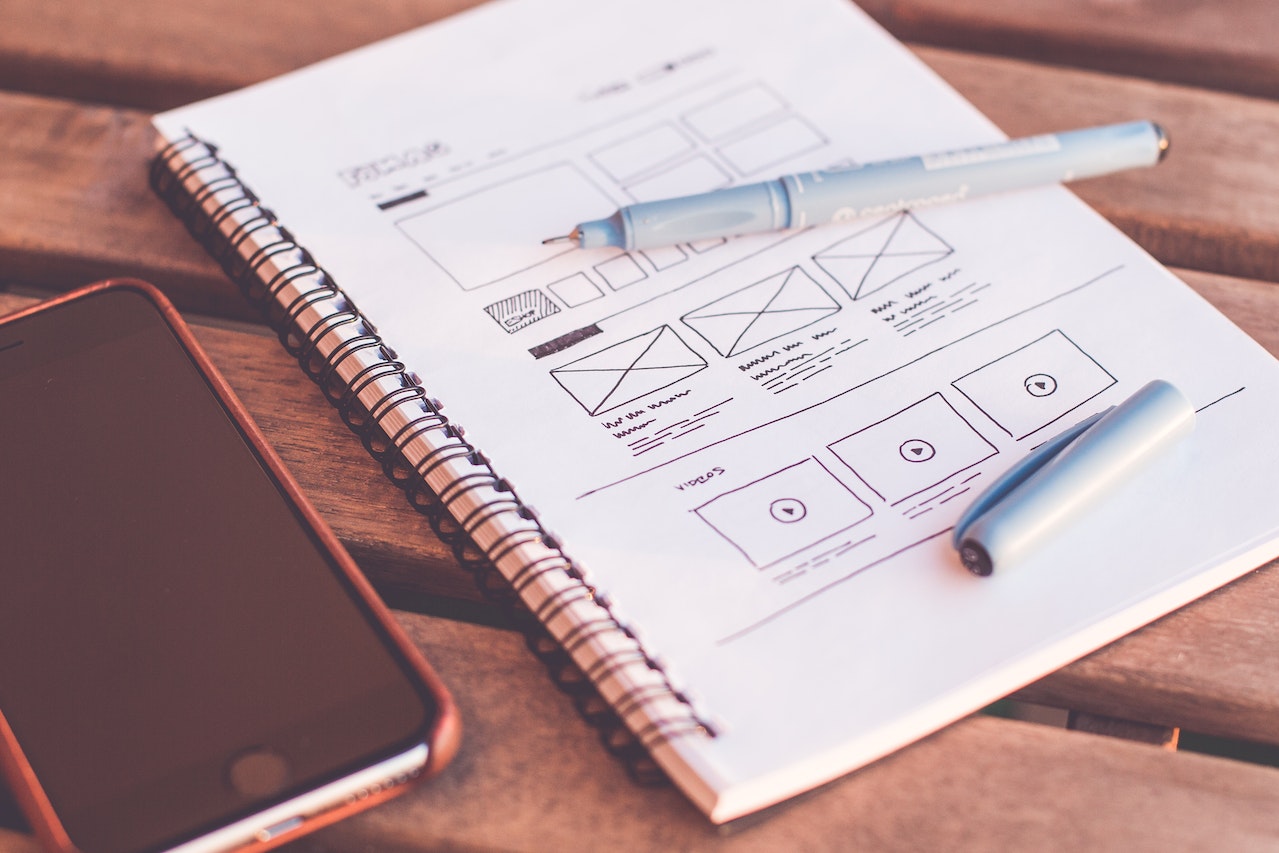How To Build Internal Links for SEO: Top 5 Techniques Every Website Owner Should Know
Internal links play a vital role in search engine optimisation (SEO), helping both users and search engines navigate and understand the content on a website. The number of internal links on a site is a significant factor in determining its overall structure and organisation. This blog post aims to provide you with the top 5 techniques to build and optimise internal links for SEO, ensuring that your site ranks higher in search results and provides an excellent user experience.
There are various types of internal links, including contextual links, navigation menu links, sidebar links, and more. Throughout this blog post, we will delve into each type, giving you a comprehensive understanding of how to add internal links effectively. By implementing these techniques, you’ll enhance your internal pages’ visibility and make it easier for search engine crawlers to discover and index your content.
When creating a piece of content, it’s essential to select the right anchor texts, as they provide context to search engines and users about the linked content. Additionally, understanding the difference between dofollow and nofollow links is crucial for managing link equity distribution. Nofollow links are marked with a nofollow tag, signaling search engine crawlers not to pass link juice or equity to the linked web page. This distinction helps manage the distribution of link equity and allows you to prioritise important pages on your site.
An effective internal linking strategy is crucial for improving site search and user experience. This blog post will explore techniques for optimising links on a page, ensuring that internal links point to relevant content and contribute positively to your site’s overall structure. By following the tips and recommendations outlined in this blog post, you’ll be well on your way to building a solid foundation for your website’s SEO.
Understanding Internal Linking Basics
Before diving into the top 5 techniques for building internal links, it’s essential to understand the fundamental concepts and elements that underpin effective internal linking strategies. In this section, we’ll cover the basics of internal linking, including anchor text selection, dofollow and nofollow links, and link equity distribution.
- Anchor Text Selection
Anchor text refers to the clickable text used to link one web page to another. Choosing the right anchor text is crucial, as it provides context for both users and search engines about the linked content. The ideal anchor text should be descriptive, relevant, and concise, clearly indicating the topic of the linked page. Avoid using generic phrases like “click here” or “read more,” as these don’t provide any context about the destination page.
Instead, use natural, keyword-rich anchor texts that align with the content you’re linking to. However, be cautious not to over-optimise by excessively using exact-match keywords, as search engines might perceive this as manipulative and potentially harmful to your site’s rankings.
- Dofollow vs. Nofollow Links
When it comes to internal linking, understanding the difference between dofollow and nofollow links is crucial. By default, all internal links are dofollow, meaning that search engine crawlers follow these links and pass link equity (or “link juice”) to the linked pages. Dofollow links contribute positively to your site’s SEO and help distribute link equity throughout your website.
On the other hand, nofollow links are marked with a “rel=nofollow” attribute, signaling search engine crawlers not to pass link equity to the linked web page. While nofollow links still help users navigate your site, they do not contribute to the linked page’s ranking. Use nofollow links sparingly and strategically, typically for user-generated content, untrusted sources, or when you don’t want to endorse a particular page.
- Link Equity Distribution and PageRank
Link equity, also known as “link juice,” is a measure of the value and authority passed from one web page to another through internal and external links. Google’s PageRank algorithm considers link equity when evaluating a page’s importance and ranking potential. The more link equity a page receives, the higher its potential to rank in search results.
An effective internal linking strategy ensures a proper distribution of link equity across your website, concentrating it on important pages and diluting it for less critical ones. This balance helps search engines understand the hierarchy of your site and prioritise the indexing and ranking of your most important content.

Technique #1: Contextual Linking
Contextual linking refers to the practice of adding internal links within the main content of a web page, connecting related pieces of content to provide additional value and information to users. This technique is highly effective in improving user engagement, reducing bounce rates, and enhancing your website’s SEO. Here, we will discuss the process of identifying relevant content to link, best practices for creating contextual links, and the benefits of this approach.
- Identifying Relevant Content to Link
The first step in contextual linking is to identify relevant and related content within your website that can be linked together. Analyse your existing content and look for opportunities to create meaningful connections between articles, guides, and resources that cover similar or complementary topics. By linking related content, you can provide additional value to your users, encouraging them to explore more pages on your site and spend more time engaging with your content.
- Best Practices for Creating Contextual Links
When adding contextual links, it’s essential to adhere to specific best practices to ensure their effectiveness:
- Use descriptive and natural anchor texts: Choose anchor texts that accurately represent the linked content and provide context for users and search engines. Avoid over-optimising with exact-match keywords and use natural language that flows well within the content.
- Strike a balance in link placement: Don’t overuse internal links within a single piece of content. Instead, find a balance that provides value without overwhelming the user or distracting from the main topic.
- Prioritise user experience: Always consider the user experience when adding contextual links. Ensure that linked content is genuinely relevant and helpful, providing additional information or insights that complement the main content.
- Benefits of Contextual Linking
Contextual linking offers several benefits for your website’s SEO and user experience:
- Improved user engagement: By providing users with additional relevant content, you can increase time on site, reduce bounce rates, and foster a positive user experience.
- Enhanced SEO: Contextual links help search engines understand your website’s content and structure, making it easier for them to index and rank your pages.
- Better link equity distribution: By linking related content, you can distribute link equity more effectively across your website, boosting the ranking potential of your most important pages.
In conclusion, contextual linking is a powerful technique for creating a well-structured, user-friendly website. By identifying relevant content to link and adhering to best practices, you can improve user engagement and enhance your site’s SEO.
Technique #2: Breadcrumbs
Breadcrumbs are a navigational aid that helps users understand their location within a website’s hierarchy and easily navigate back to previous levels or sections. Implementing breadcrumbs not only improves user experience but also enhances your website’s SEO by providing search engines with a clear understanding of your site’s structure.
In this section, we will discuss the role of breadcrumbs in site navigation, how to implement them effectively, and the importance of breadcrumb schema markup for SEO benefits.
- The Role of Breadcrumbs in Site Navigation
Breadcrumbs typically appear at the top of a web page, displaying a series of links that represent the hierarchical path from the homepage to the current page. Users can quickly navigate back to previous levels, making it easier to explore your site and find relevant information.
For search engines, breadcrumbs help crawlers understand the organisation and structure of your website, making it easier to index and rank your content. This improved understanding of your site’s hierarchy can contribute to better search visibility and higher rankings.
- How to Implement Breadcrumbs Effectively
To implement breadcrumbs on your website, follow these best practices:
- Keep it simple: Breadcrumbs should be straightforward and easy to understand. Use clear, concise labels for each level, and ensure that the breadcrumb trail accurately reflects your site’s structure.
- Consistent placement: Breadcrumbs should be placed consistently across your site, typically at the top of the page below the header or navigation menu. This ensures that users can easily locate and use them for navigation.
- Use separators: Use visual separators, such as arrows or slashes, to distinguish between the different levels in the breadcrumb trail. This makes it easier for users to understand the hierarchy and navigate between levels.
- Breadcrumb Schema Markup for SEO Benefits
To further enhance your breadcrumbs’ SEO benefits, it’s essential to implement breadcrumb schema markup. Schema markup is a structured data vocabulary that helps search engines understand and interpret your content more effectively. By adding breadcrumb schema markup, you provide search engines with explicit information about your site’s hierarchy, which can lead to improved search visibility and the display of rich snippets in search results.
Breadcrumb schema markup can be added using JSON-LD, Microdata, or RDFa formats.
Google recommends using JSON-LD, as it is the most straightforward and widely supported format. Ensure that your markup accurately represents your breadcrumb trail and validates using Google’s Structured Data Testing Tool or similar services.
Technique #3: Content Hierarchy and Silo Structure
Organising your website’s content into a clear hierarchy and silo structure is essential for improving user experience, site navigation, and SEO performance. This technique involves grouping related content by topic or category and creating a logical, easy-to-navigate site structure. In this section, we’ll discuss the importance of organising content by topic or category, how to create a logical site structure, and best practices for linking within and between content silos.
- Organising Content by Topic or Category
Categorising your content by topic or theme makes it easier for users and search engines to understand and navigate your site. By organising your content into distinct categories, you can create a more intuitive user experience and help search engines index your pages more effectively.
To organise your content, start by identifying the main themes or topics covered on your website. Create top-level categories for these themes and then subdivide them into subcategories or individual pages as necessary. This process will help you establish a clear content hierarchy and make it easier to implement internal linking strategies.
- Creating a Logical Site Structure
A well-structured website is essential for both user experience and SEO. A logical site structure ensures that users can easily navigate your content and find the information they’re seeking, while search engines can better understand your website’s hierarchy and organisation.
To create a logical site structure, follow these best practices:
- Use a flat architecture: Keep your site structure as shallow as possible, ideally with no more than three to four levels of depth. This approach makes it easier for users and search engines to navigate your site and access all of your content.
- Use descriptive URLs: Ensure that your URLs accurately represent the content of each page and are structured consistently across your site. Descriptive URLs make it easier for users and search engines to understand the context of your content.
- Implement clear navigation menus: Create user-friendly navigation menus that clearly indicate the hierarchy of your site and guide users through your content. Include both top-level categories and relevant subcategories to help users find the information they’re looking for quickly.
- Linking Within and Between Content Silos
Once you’ve established a clear content hierarchy and site structure, it’s essential to implement internal linking strategies that connect related pages within and between your content silos. This helps distribute link equity throughout your site and improve your SEO performance.
To link effectively within and between content silos, follow these tips:
- Use contextual links: As discussed in Technique #1, contextual linking is an effective way to connect related content within your site. Use descriptive anchor texts to link between pages within the same content silo or between related silos.
- Link to cornerstone content: Identify the most important and valuable pages within each content silo and ensure that they receive the most internal links. This helps distribute link equity to your cornerstone content and improve its ranking potential.
- Avoid excessive cross-linking: While it’s essential to link between related content silos, avoid excessive cross-linking that might dilute your site’s focus or confuse users. Focus on linking to the most relevant and valuable content that complements the primary topic.
Technique #4: Footer and Sidebar Links
Footer and sidebar links are an essential component of an effective internal linking strategy, offering additional navigational options for users and helping search engines understand your website’s structure. While these types of links might not carry the same weight as contextual links, they still contribute positively to your site’s SEO and user experience. In this section, we’ll discuss the role of footer and sidebar links, best practices for implementing them, and potential pitfalls to avoid.
- The Role of Footer and Sidebar Links
Footer and sidebar links serve as supplementary navigation tools, providing users with quick access to essential pages or sections on your site. These links can help improve user engagement, reduce bounce rates, and encourage users to explore more of your content.
For search engines, footer and sidebar links contribute to a better understanding of your site’s structure and hierarchy. While these links might not pass as much link equity as contextual links, they still help distribute link equity across your site and support the overall internal linking strategy.
- Best Practices for Implementing Footer and Sidebar Links
To effectively implement footer and sidebar links on your website, follow these best practices:
- Focus on essential pages: Include links to your most important pages, such as your homepage, about page, contact page, blog, and key product or service pages. This ensures that users can easily access critical information, regardless of their location on your site.
- Use clear and descriptive anchor texts: Opt for concise, descriptive anchor texts that accurately represent the linked content. This makes it easier for users to understand the purpose of each link and helps search engines contextualize the linked pages.
- Organize links logically: Arrange footer and sidebar links in a logical, easy-to-navigate manner. Use headings or separators to distinguish between different sections or categories, ensuring that users can quickly locate the information they’re seeking.
- Potential Pitfalls to Avoid
While footer and sidebar links can benefit your website’s SEO and user experience, it’s essential to avoid certain pitfalls that can harm your site’s performance:
- Avoid excessive links: Including too many links in your footer or sidebar can overwhelm users and dilute your link equity. Focus on linking to the most important pages or sections, and avoid overloading users with unnecessary options.
- Don’t use spammy or manipulative tactics: Some websites use footer and sidebar links to manipulate search rankings by stuffing keywords or linking to low-quality content. This practice can result in penalties from search engines and harm your site’s reputation. Always prioritise user experience and link to valuable, relevant content.
- Keep mobile-friendliness in mind: Ensure that your footer and sidebar links are easily accessible and functional on mobile devices. With the increasing prevalence of mobile browsing, it’s essential to provide a seamless user experience across all devices.
Technique #5: Internal Linking with Images and Infographics
Incorporating internal links within images and infographics is another effective way to enhance your website’s SEO and user experience. Visual content is engaging and often more easily digestible, making it an excellent vehicle for internal linking. In this section, we’ll discuss the benefits of internal linking with images and infographics, how to add links to visual content, and best practices for optimising image links for SEO.
- Benefits of Internal Linking with Images and Infographics
Internal linking with images and infographics offers several benefits:
- Improved user engagement: Visual content captures users’ attention, encouraging them to click on linked images and explore more of your website.
- Enhanced content variety: By incorporating visual elements into your internal linking strategy, you create a more diverse and engaging user experience.
- Better link equity distribution: Like other types of internal links, image and infographic links help distribute link equity throughout your site, contributing to improved SEO performance.
- Adding Links to Visual Content
To add internal links to images and infographics, follow these steps:
- Choose relevant images or infographics: Select visual content that is relevant to the linked page and provides additional value or context for users.
- Insert the link within the image or infographic: Use HTML or your content management system’s built-in tools to add a hyperlink to the image or infographic. Ensure that the link points to a relevant, valuable internal page.
- Add alt text and title attributes: To optimize your image links for SEO, include descriptive alt text and title attributes for each image or infographic. This helps search engines understand the context of the linked content and can contribute to better search rankings.
- Best Practices for Optimising Image Links for SEO
To optimise your image and infographic links for SEO, follow these best practices:
- Use descriptive file names: Choose file names that accurately describe the image or infographic content, using relevant keywords where appropriate. This helps search engines understand the context of the linked content and can improve search visibility.
- Compress images and infographics: Large image files can slow down your website’s loading time, negatively impacting user experience and search rankings. Compress your images and infographics to reduce file size without sacrificing quality.
- Ensure mobile-friendliness: Make sure that your images and infographics are responsive and display correctly on mobile devices. With the growing prevalence of mobile browsing, it’s crucial to provide a seamless user experience across all devices.
Why Building Internal Links For SEO Is Key
Implementing a robust internal linking strategy is vital for enhancing your website’s SEO performance and user experience. By employing a diverse range of techniques, such as listed in this guide, you can create a well-structured, user-friendly website that ranks well in search engine results.
Remember to monitor your internal linking strategy’s performance regularly and make adjustments as necessary. As your website grows and evolves, it’s essential to maintain a strong internal linking structure that supports your site’s SEO and user experience goals. By investing in a solid internal linking strategy, you can set your website up for long-term success in the competitive world of online search.



